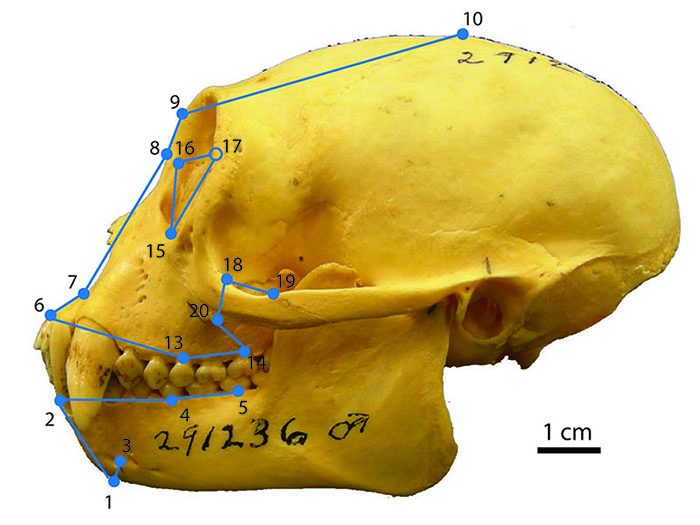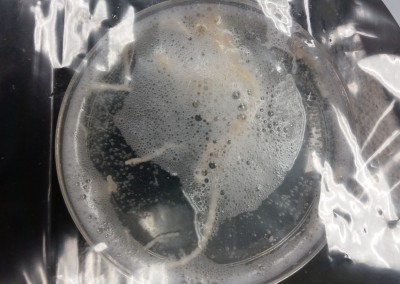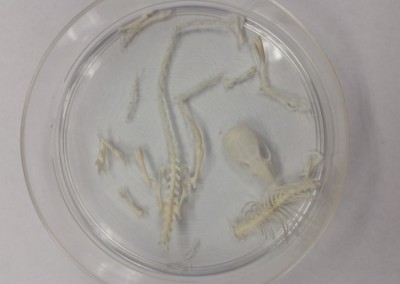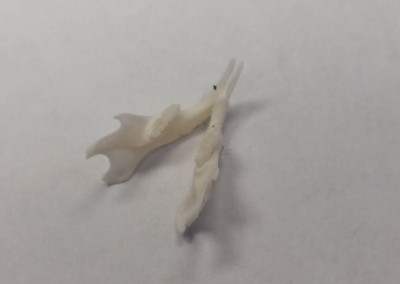The first specimen cleaned by the lab’s dermestid beetles was a common house mouse (Mus musculus).
- The skinning process was started while the specimen was still partially frozen (this allowed for the skin to be more easily removed and the decomposition smell to be reduced).
- The skin and major organs were first removed (the dermestids do not digest fur or feathers well and we do not want to grow our population too quickly) using a size 10 scalpel and tweezers.
- The organs were refrozen for beetle food (why let good organs go to waste?).
- The specimen was then placed in a petri dish inside the aquarium containing the beetle farm for 3 days until it was fully cleaned (the skull took 2 more days until the brain was fully consumed).
- The petri dish was then filled with hydrogen peroxide for 24 hours for whitening and cleaning and placed into a sealed bag (as opposed to freezing the finished specimen for 24 hours to kill the remaining larvae before whitening).
- The hydrogen peroxide was then replaced with water for another 24 hours to prevent decalcification of small specimens.




